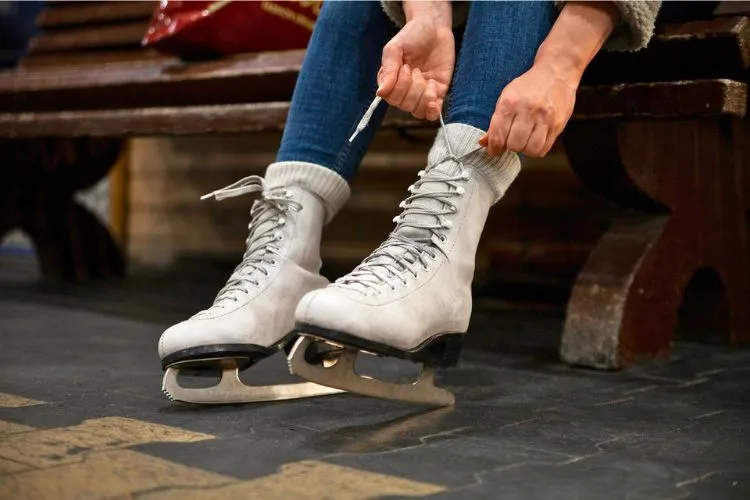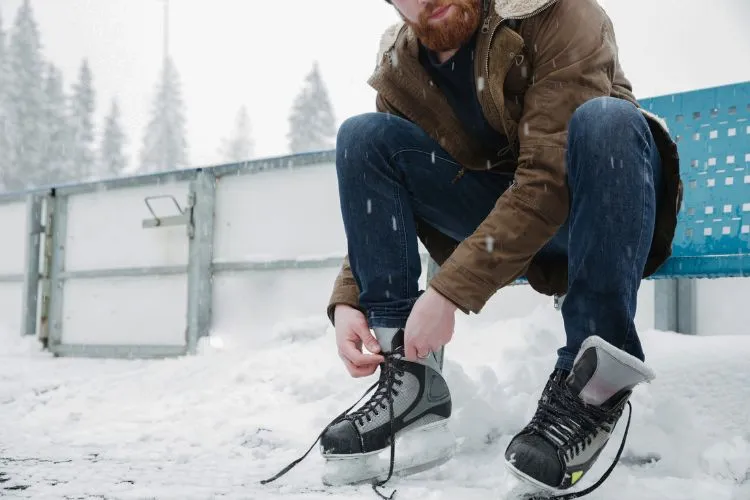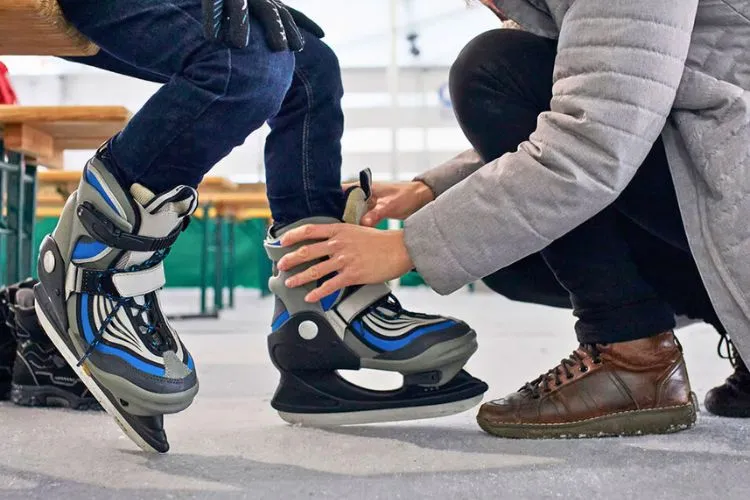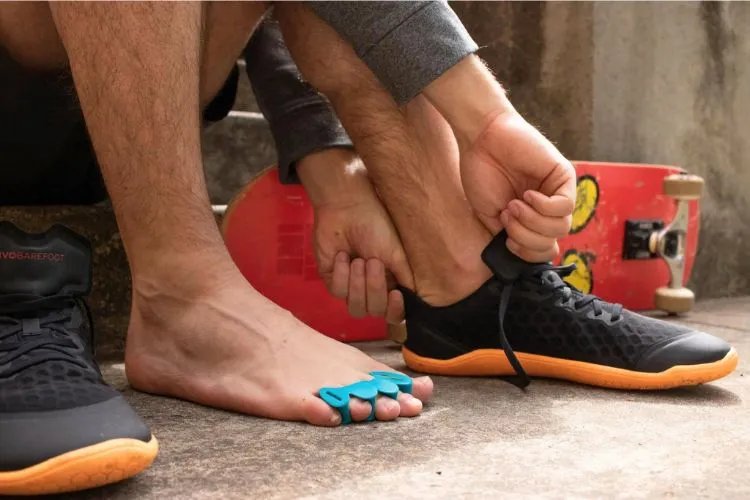Ice skating is a delightful activity recognized for its blend of fitness perks and pure enjoyment.
However, a common barrier to fully embracing this sport is the discomfort and pain that often come with wearing ice skates.
This article seeks to delve deep into why do ice skates hurt my feet and outlines proactive measures to mitigate this issue.

Why Do Ice Skates Hurt My Feet?
Ice skates are uniquely designed to offer ultimate control and stability on the ice. This design, while essential for performance, can contribute to foot discomfort in several ways.
Recognizing these aspects is the first step toward achieving a more comfortable skating experience.
The Importance of Proper Fit
Sizing Issues
Accurate sizing is crucial when selecting ice skates. Unlike regular shoes, skates often run on different sizing charts, which can lead to mistakes if not carefully considered.
Wearing skates that are too small can put undue pressure on the feet, leading to pain and blisters.
On the other hand, skates that are too large can cause your feet to move inside them, leading to friction and instability.

Skate Design and Construction
Ice skates are designed to be stiff to provide the required ankle support. This stiffness can cause pressure points on the foot, especially if the skates are new and not yet broken in.
A break-in period is normal for most skates, during which they will become more comfortable as they mold to your feet.
Overlooked Factors
Factors such as the type of socks worn and the method of lacing the skates can have a significant impact on foot comfort.
Wearing the wrong socks or improperly lacing your skates can contribute to discomfort. Additionally, individual foot anatomy and pre-existing conditions can also play a role.
Pro Tips for Preventing and Alleviating Pain
The Right Skates
Choosing the right skates is about more than the correct size. Look for skates that offer ample support and a comfortable fit right from the start.
For those who skate regularly, investing in semi-custom or custom skates can provide the best fit and comfort.
Lacing Techniques and Padding
Effective lacing is crucial for comfort and support. Proper lacing techniques ensure a snug fit without cutting off circulation or causing pressure points. Padding in critical areas, such as the toes and heels, can also prevent pain and blisters.
Sock Selection
The choice of socks plays a substantial role in comfort. Socks specifically designed for ice skating can provide the right level of warmth and padding.
Avoid wearing multiple pairs of socks or socks that do not fit well, as they can cause issues inside the skate.
Breaking In New Skates
New skates typically require a break-in period. Start by wearing your skates around the house and then gradually increase your time on the ice.
This approach helps the skates mold to your feet and reduces the chances of discomfort.
Foot Care and Strengthening
Strengthening exercises for the feet can improve your comfort in skates by enhancing stability and reducing fatigue.
Proper foot care, including stretches and massaging, can also prevent pain and improve your overall skating experience.
You may also read: How to Break in Ice Skates? | Best Knee Pads for Ice Skating
Professional Fitting Services
Seeking professional fitting services for ice skates can greatly enhance comfort and performance on the ice. Expert fitters assess your foot’s size, shape, and any unique requirements to ensure a precise fit.

They take into consideration factors such as skating style and frequency of use. Properly fitted skates provide better support, reducing the risk of blisters, chafing, and foot pain.
They also enhance skater control, stability, and confidence. Utilizing professional fitting services is an investment in your safety and enjoyment, leading to a more personalized skating experience and helping prevent common injuries associated with ill-fitting skates.
Maintenance to Prevent Foot Pain
Proper maintenance of ice skates is crucial to prevent foot pain and ensure maximum comfort.
Dull blades can cause the foot to overcompensate with unnatural movements, while sharp blades allow for smoother glides and less strain. Regularly sharpening the blades as needed can prevent this undue stress.
Additionally, moisture from ice and sweat can lead to the breakdown of skate materials and the development of blisters or fungal infections.
Thoroughly drying skates after each use preserves their condition and ensures a snug fit, preventing friction that can cause soreness.
Attention to these maintenance practices extends the life of your skates and supports foot health.
Common Foot Issues Among Skaters
Skaters often face foot issues such as arch pain, heel pain, and bunions due to the tight fit and repetitive stress of skating. These conditions can impair skating performance by limiting mobility and causing discomfort.

Arch pain may indicate overuse or improper arch support, heel pain often stems from inflammation, and bunions are exacerbated by narrow, tight-fitting skates.
Addressing these issues with proper skate fit, supportive insoles, or medical advice is crucial for maintaining foot health and skating enjoyment.
Frequently Asked Questions (FAQs)
How can I tell if my ice skates are the right size?
Measure your feet and consult the skate manufacturer’s sizing chart. Ensure there is a snug fit without undue pressure on any part of your foot.
What are the best socks to wear with ice skates?
Opt for thin, well-fitting socks made specifically for ice skating, designed to offer warmth and padding without bulk.
Should new ice skates hurt the first few times I use them?
Some discomfort is normal as the skates mold to your feet, but excessive pain should not be considered normal.
How long does it usually take to break in a new pair of ice skates?
The break-in period can vary but usually lasts several hours of skating time. Gradually increasing the duration of your skating sessions can help.
Can inserts or orthotics help with ice skate discomfort?
Yes, inserts or orthotics can provide additional support and padding, especially for skaters with specific foot conditions.
Conclusion
Ice skating should be an enjoyable activity, not one marred by foot pain. By understanding the causes of discomfort and taking proactive steps toward selecting the right equipment and caring for your feet, you can significantly enhance your skating experience.
By approaching ice skating with the right equipment, knowledge, and care, skaters can minimize discomfort and make their time on the ice much more enjoyable. Remember, the goal is to skate with joy and ease, not pain and frustration.

Matthew James is a passionate skater who wanted to create a platform to share his love for skating with others. With a vision to create a vibrant community of skaters, he aims to provide a space where skaters of all levels can connect, learn, and grow together.
